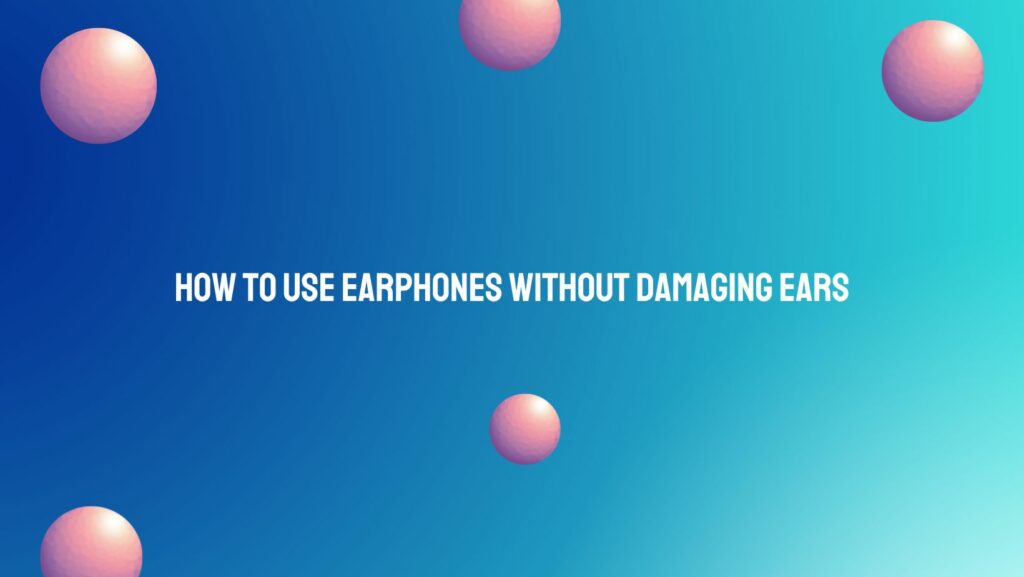In today’s bustling world, earphones have become essential accessories, offering us a personal soundtrack to accompany our daily activities. Whether we’re commuting, exercising, or simply relaxing, earphones provide a gateway to our favorite music, podcasts, and audio content. However, with great auditory pleasure comes the responsibility of protecting our ears from potential damage. Here’s a comprehensive guide on how to use earphones without harming your ears:
- Choose the Right Earphones: Selecting the appropriate earphones is the first step in preserving your auditory health. Opt for high-quality earphones that prioritize comfort and fit. In-ear monitors (IEMs) with soft silicone or foam tips offer a snug fit and excellent sound isolation without exerting excessive pressure on the ear canal.
- Mind the Volume: Controlling the volume level is crucial in safeguarding your ears from damage. Listen to audio at a moderate volume, around 60% of the maximum volume, to minimize the risk of auditory fatigue and potential hearing loss. Avoid the temptation to crank up the volume to drown out external noise, as this can lead to irreversible damage over time.
- Follow the 60/60 Rule: Adhere to the 60/60 rule, which recommends listening to audio at no more than 60% of the maximum volume for no longer than 60 minutes at a time. Taking regular breaks between listening sessions allows your ears to rest and recover, reducing the risk of auditory fatigue and potential damage.
- Practice Safe Listening Habits: Be mindful of your listening habits and environment. If you’re in a noisy setting, resist the urge to increase the volume to compensate for external noise. Instead, opt for noise-canceling earphones or find a quieter environment to enjoy your audio content.
- Use Noise-Canceling Technology Wisely: Noise-canceling earphones can help reduce the need for higher volume levels by blocking out external noise. However, avoid relying solely on noise cancellation to protect your ears. Use them in conjunction with safe listening practices to minimize the risk of auditory damage.
- Give Your Ears a Break: Allow your ears to rest and recover after prolonged use of earphones. If you’ve been listening to audio for an extended period, take a 5-10 minute break every hour to give your ears a chance to recuperate.
- Keep Earphones Clean: Regularly clean your earphones to prevent the buildup of dirt, wax, and bacteria, which can contribute to ear infections and discomfort. Use a soft cloth or cotton swab dipped in mild soap and water to gently clean the earphone tips and outer surfaces.
- Avoid Sharing Earphones: Sharing earphones can transfer bacteria and increase the risk of ear infections. Whenever possible, avoid sharing your earphones with others, and if you must share, clean them thoroughly before and after use.
- Consider Alternatives: Explore alternative listening options, such as speakers or bone conduction headphones, which transmit sound through vibrations in the bones of the skull, bypassing the ear canal altogether. These alternatives can reduce the risk of ear damage associated with traditional earphones.
In conclusion, using earphones without damaging your ears requires mindfulness, moderation, and adherence to safe listening practices. By choosing the right earphones, controlling the volume, taking regular breaks, and maintaining good hygiene, you can enjoy your favorite audio content while safeguarding your auditory health for years to come. Remember, your ears are precious, and protecting them should always be a top priority.


